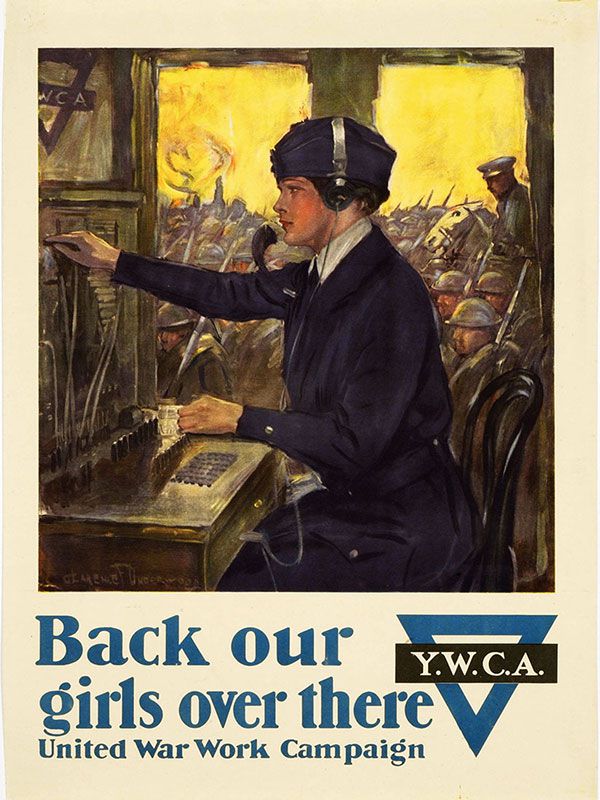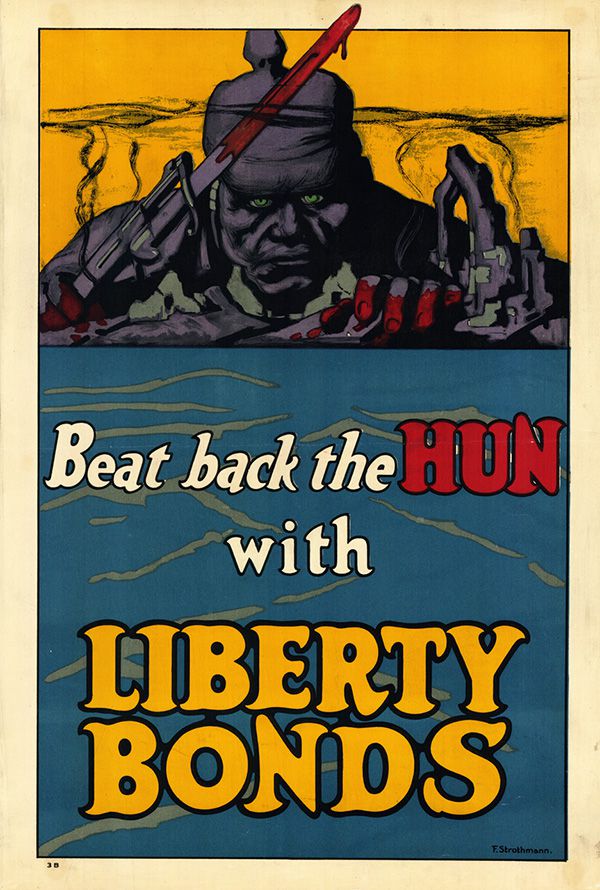Making World War I Relevant Today: Are WWI Propaganda Posters the Original Meme?
Merriam-Webster officially defines a meme as “an idea, behavior, style, or usage that spreads from person to person within a culture.” But these days, most of us think of memes as those viral posts online that convey a message using a photo with text. They range from funny to serious to offensive, and everything in between. Sometimes they include a call to action, and other times they focus on creating an emotion. While you might think memes are so 21st century, I’d make the argument that World War I propaganda posters were the original memes.

Maybe this argument sounds odd to you, or maybe it makes perfect sense. Either way, it gives us a starting place for a conversation. It allows me to take a historic element from World War I and make it relevant today.
To get the general American public interested in historic topics, we need to think about creative ways we can make connections to our agency missions and the world we live in today. We, the American Battle Monuments Commission, recently hosted a Facebook Live chat where we examined WWI posters that helped shape public opinion on the war.
During this discussion we talked about the:
- wording used
- target audience
- call to action
- emotional appeal
- selected colors and fonts
- selected image(s)
These are universal topics when it comes to how we communicate. Whether we are talking about WWI posters or today’s memes, these ideas and discussion points can be applied to any form of communication.

We also looked at how posters served as a “cutting-edge” communication tool of the early 19th century. This might sound funny to us now, but with no television or internet, and only limited radio (radio existed at the time of WWI, but it was not utilized as a widely available public communication tool), the introduction of large scale, full-color posters not being used as advertisements was novel. I like this Facebook example because we take real, primary source documents from World War I, and apply concepts that could also be used to examine Facebook, Instagram, or Snapchat posts from today.
This is an example that worked for my agency. But World War I is such a rich, historic event, there are endless ways to make it relevant for your agency. I pulled some WWI statistics from the book, American Armies and Battlefields in Europe (originally published by ABMC in 1938), to help brainstorm topic ideas.
- Logistics and Planning: As the first major global conflict for the United States, people, supplies, and equipment had to be moved across the ocean in an efficient manner. *****
- More than 5 million 75-millimeter shells were purchased in France by the American Expeditionary Forces.*****
- More than 7 million rounds of caliber 75-millimeter ammunition were expended in actual combat by the American Expeditionary Forces.*****
- Medicine and Health: Between casualties and the Spanish Flu of 1918, significant resources had to be dedicated to the health care overseas.*****
- There were 153 base hospitals, 66 camp hospitals, 12 convalescent camps, 21 hospital trains, and 6,875 ambulances.*****
- As of November 11, 1918, there were more than 192,000 normal beds to care for sick or injured Americans.*****
- Representation from Different States: American national guard and national army divisions sent to Europe were based on geography.*****
- The 28th Division, nicknamed the Keystone Division, hailed from Pennsylvania.*****
- The 37th Division, nicknamed the Buckeye Division, hailed from Ohio.*****
- The 90th Division, nicknamed the Alamo Division, hailed from Texas and Oklahoma.*****
- Finance, Funding and Loans: In today’s dollars, WWI would cost more than $300 billion.*****
- The war cost the United States more than $1 million per hour from April 1917 to May 1919.*****
- The total cost of running the U.S. government from 1791 to 1914 was practically equal to the entire expenditure of the war ($22 billion).*****
- The pay of officers and men amounted to only about 13 percent of the $22 billion.*****
- Animals: Horses and mules played a significant role in the war since automobile production was still in its infancy.*****
- Nearly 68,000 horses and mules were procured by the AEF for use in the war.
These statistics can serve as a good starting place for an idea, and with a little digging you can find primary source documents to highlight your concept. History may occur in the past, but understanding the implications happens now. Make World War I relevant for your agency and audience.
I wonder if the founding fathers could have written the amendments to the U.S. constitution in 140 characters or less?

